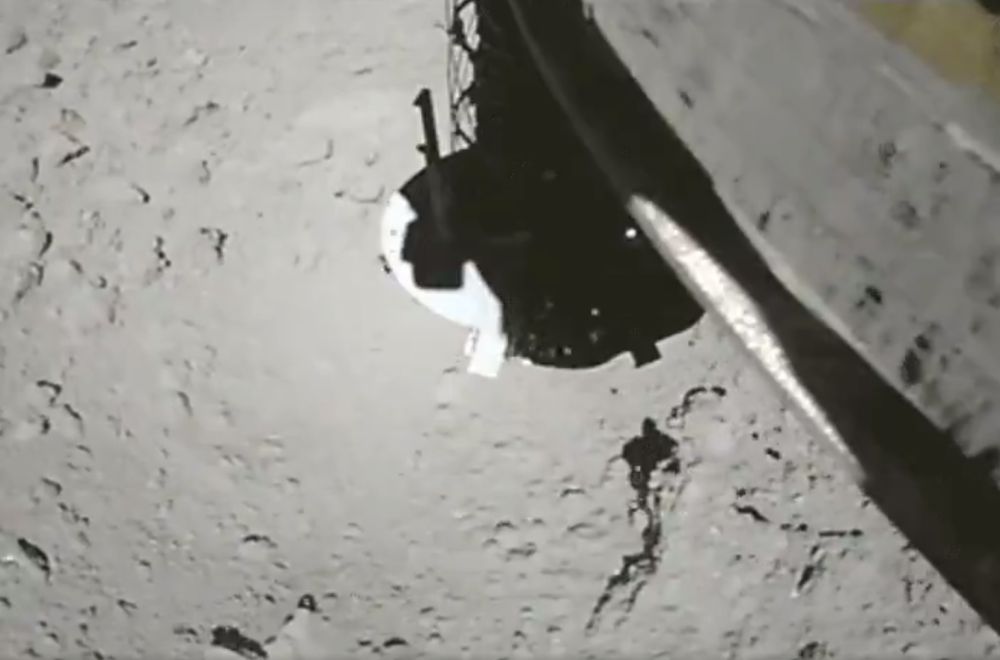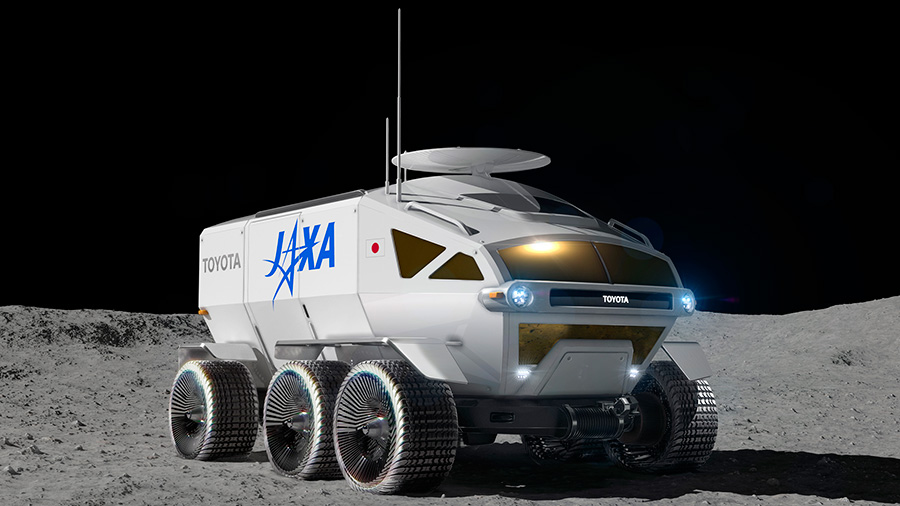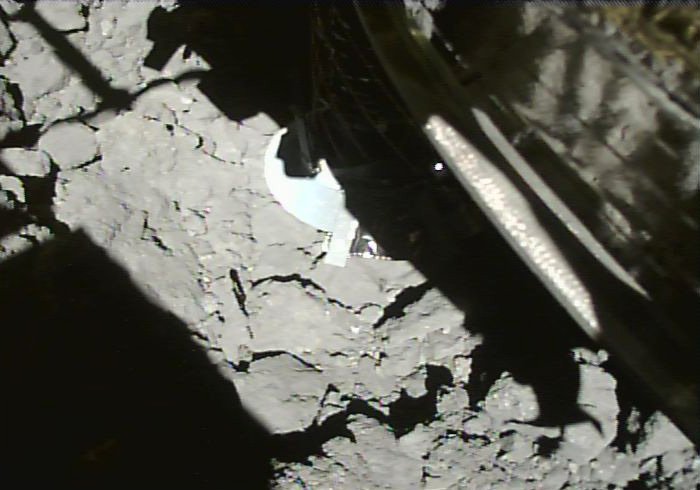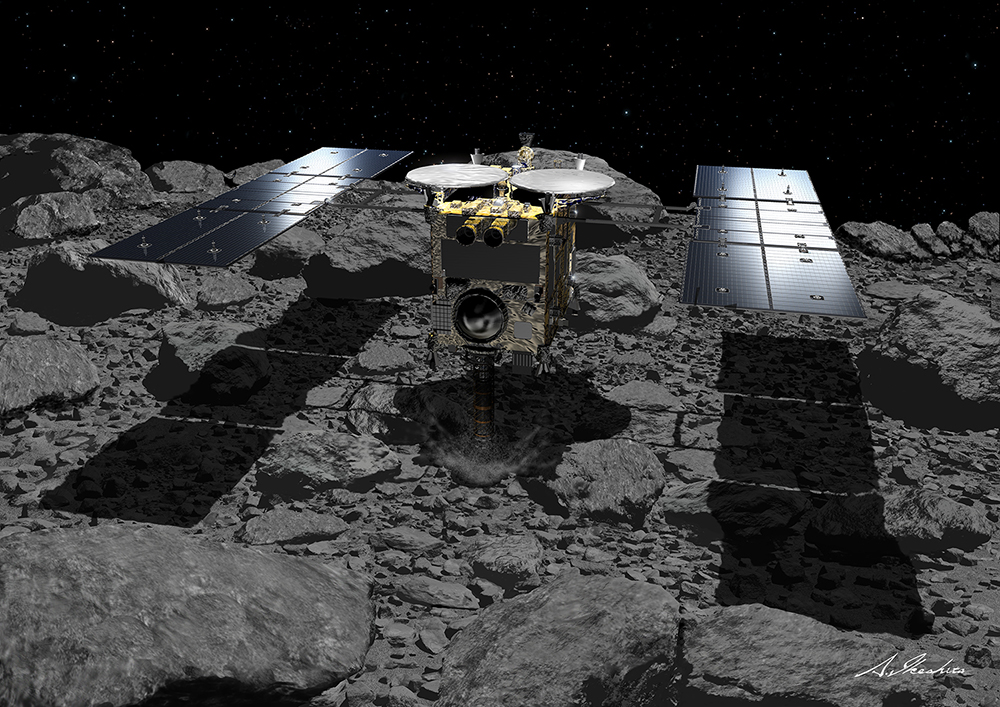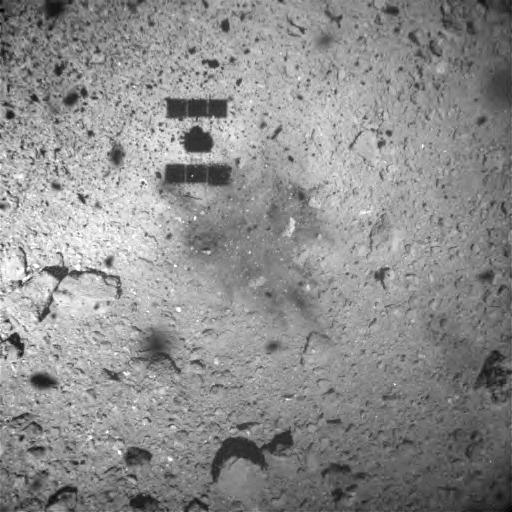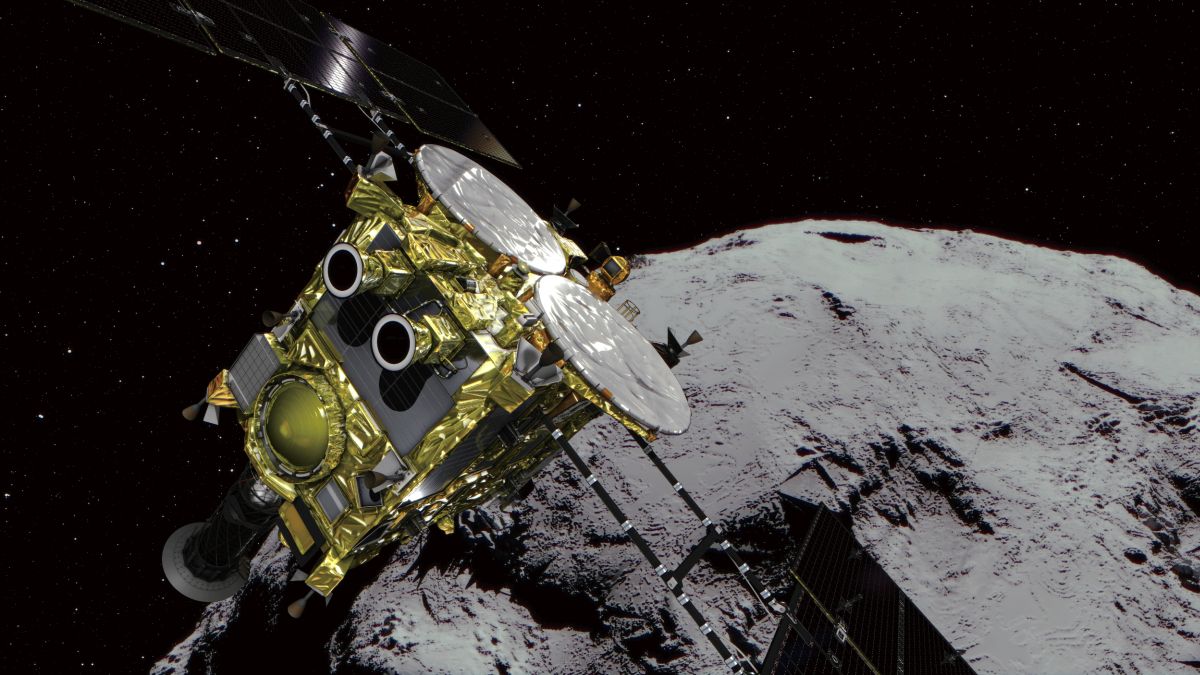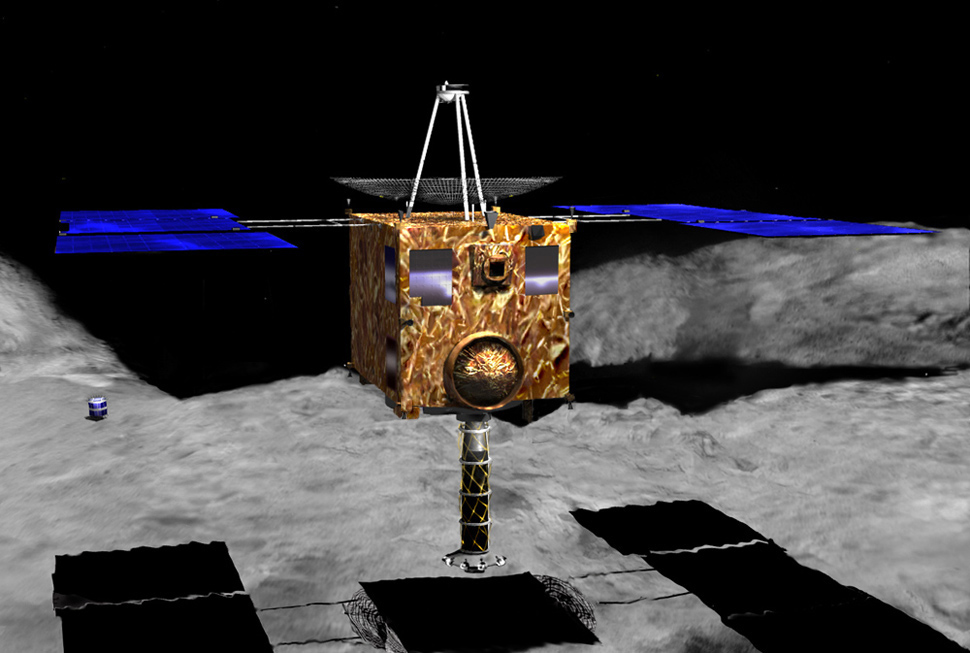A new video shows Japan’s Hayabusa 2 sample return spacecraft collecting samples from asteroid Ryugu. The spacecraft has been at Ryugu for months now, and it’s all been leading up to this. In the video, you can clearly see airborne asteroid dust and particles swirling around in the low gravity.
Continue reading “Watch this Amazing Video of Hayabusa 2 Picking Up a Sample from the Surface of Ryugu”Watch this Amazing Video of Hayabusa 2 Picking Up a Sample from the Surface of Ryugu
